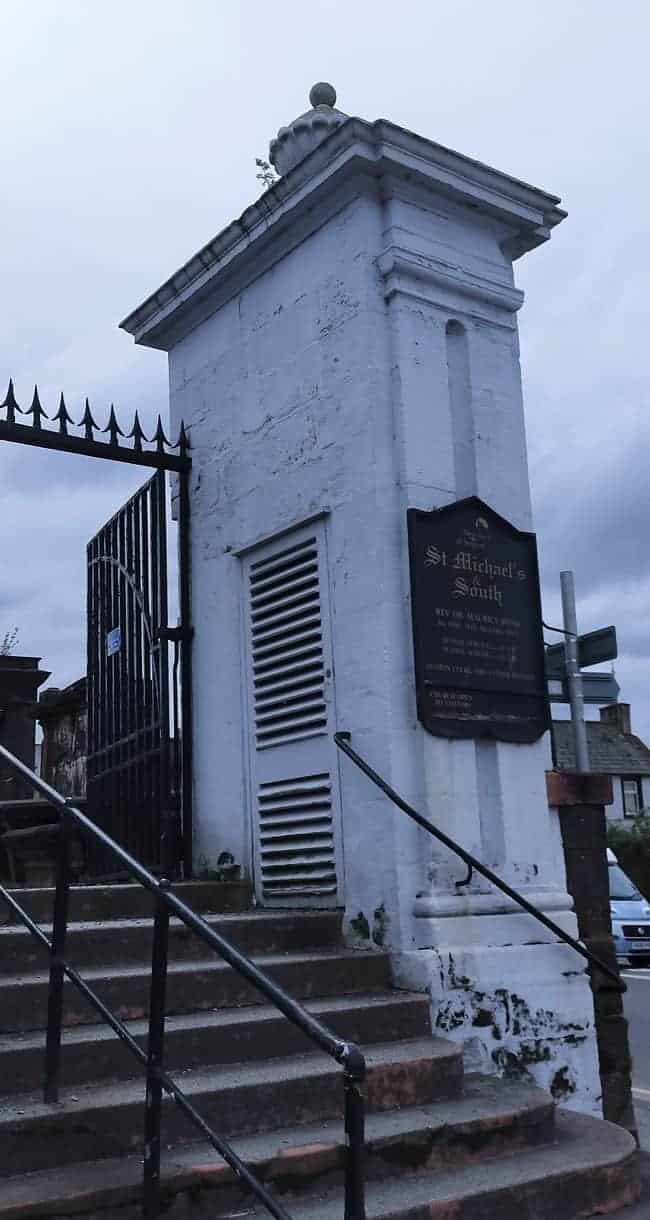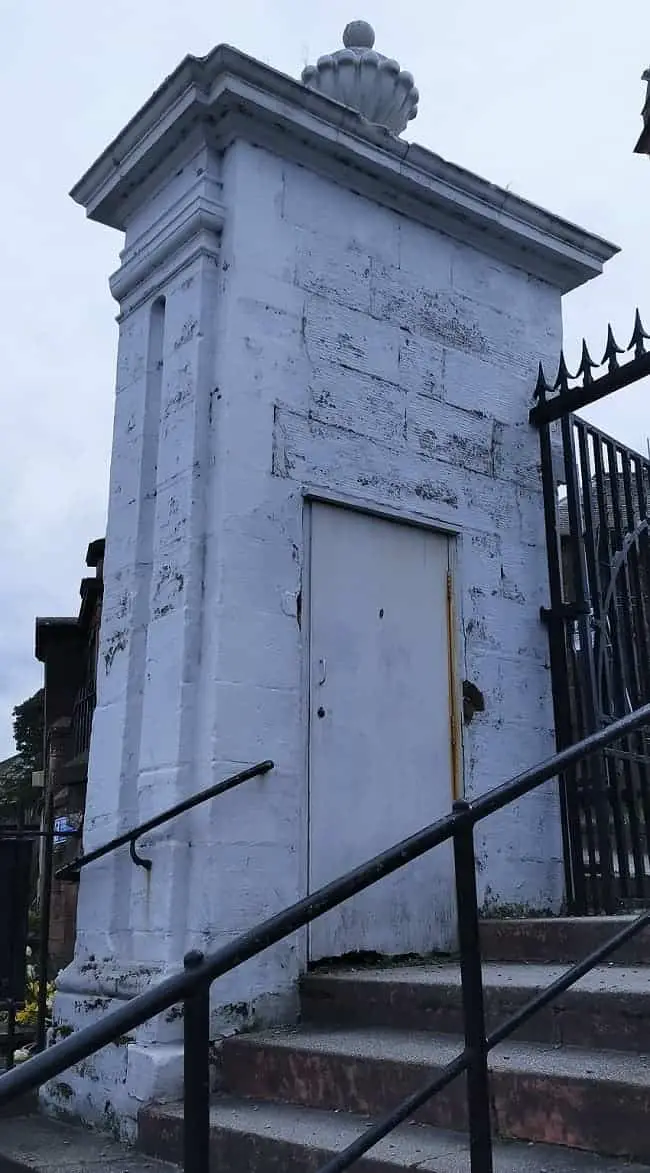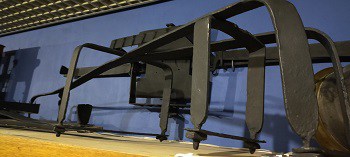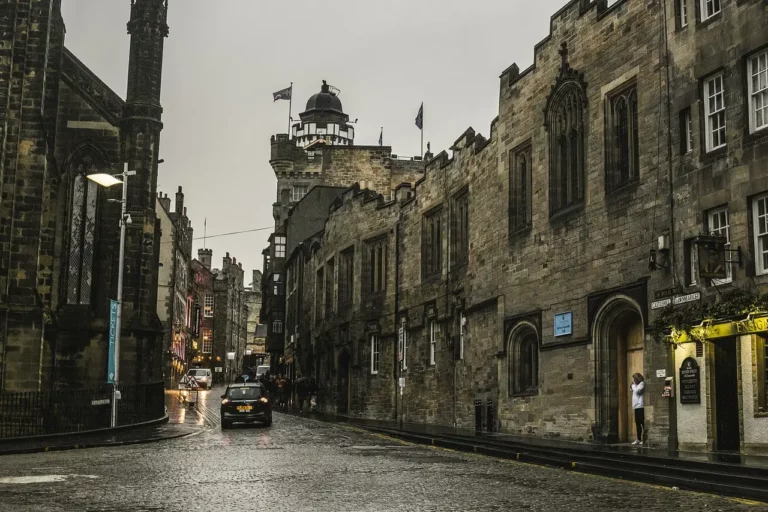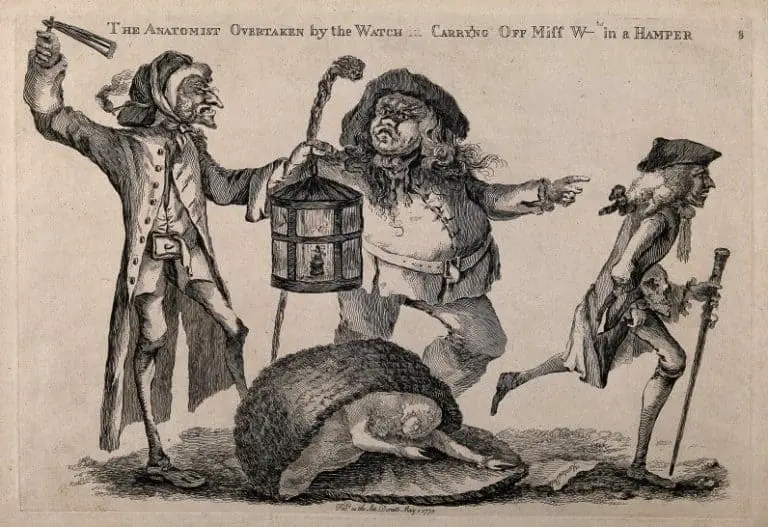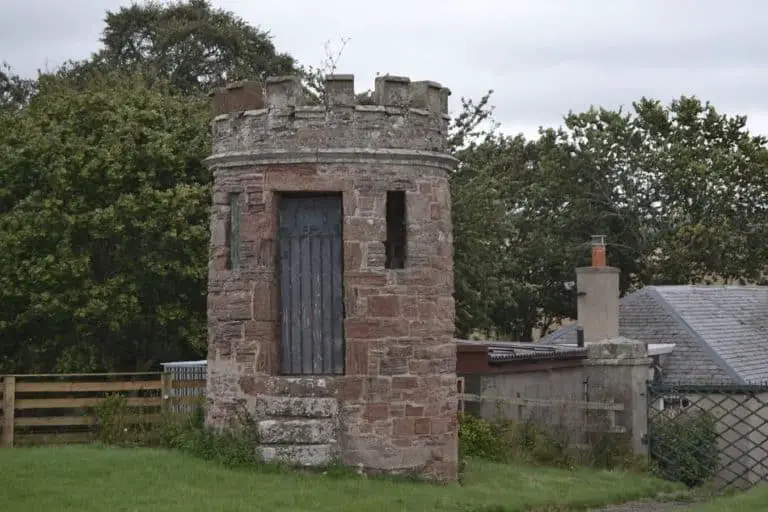Body Snatching On The A75 | Scotland’s Haunted Road
Taking a trip along the most haunted road in Scotland, the A75, was certainly not part of my plan when I headed over to Dumfries & Galloway to see some body snatching sites that I’ve been wanting to visit for over 10 years.
But travel along it I did, and I dipped into five locations which promised mortsafes and watch houses along the way – all of which are reputed to have links with the macabre art of body snatching.
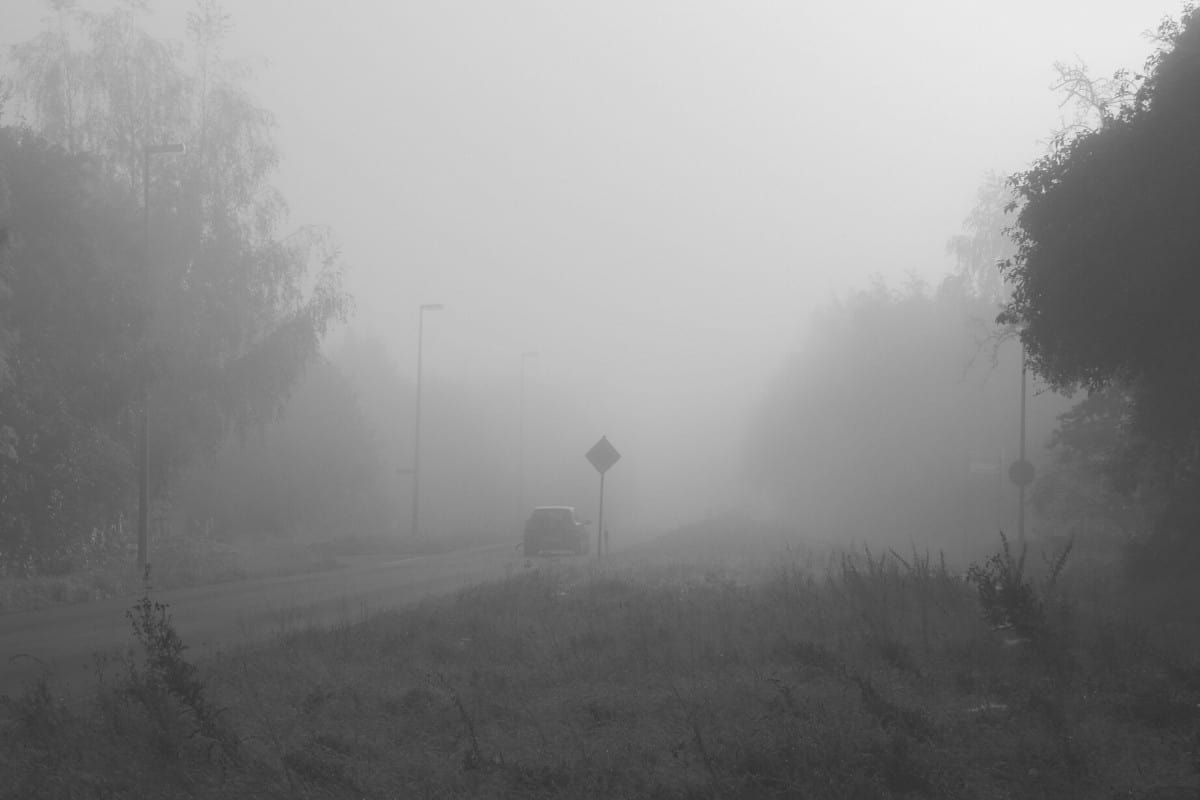
I also paid homage to Dumfries Museum, keeping my fingers crossed that I’d get to see an important body snatching relic.
Jump To What Interests You Here
Finding Scotland’s Most Haunted Road
Scotland’s most haunted road, the A75, runs from Gretna Green, through the county town of Dumfries and on to the coastal town of Stranraer on the West Coast of Scotland. Running for a total of 95.4 miles (153.5 km), two sections have heightened paranormal activity; the first between Annan and Gretna on an old section of the A75 and the second, known as the ‘Kinmount Straight’.
Dumfries & Galloway is the first county you come into if you’re travelling up to Scotland on the M6 via Penrith and Carlisle like I was, and if you know your history, you’ll know that it’s very nearly the same route on which William Hare was last seen alive in 1829.
And so it was, that with the words of the regions only paranormal investigators ‘Mostly Ghostly Tours’ filling my head, I set offalong my first haunted road, expecting some big things from the locations I’d long set my heart on seeing.
Dumfries: St Michael’s & South Parish Church
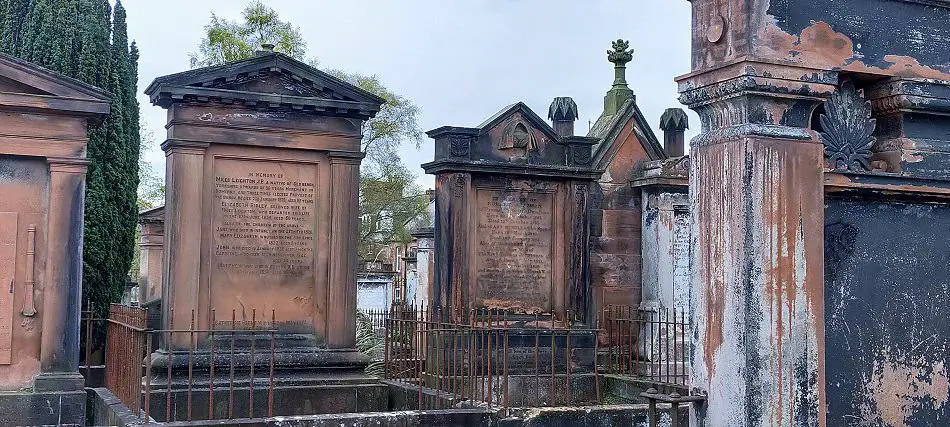
Lying 80 miles (128.7km) from Scotland’s capital, the job of getting cadavers from Dumfries to the dissecting tables of Edinburgh or Glasgow would have required careful planning.
Coaches disembarking from Dumfries left on a fairly regular basis, although Georgian travel was exceptionally slow.
The coach from Dumfries to Glasgow for example, the Craigengillan took nearly fourteen hours for a one-way trip, imagine the state of the cadaver after that!
We know that many cadavers were discovered en-route at various locations throughout the country, meaning shipping a corpse in this way was not without its problems, despite attempts to disguise any decomposition with bitter salts or pickled herrings.
But despite this, raids on graveyards far away from the teaching centres of Edinburgh and Glasgow were still carried out and Dumfries, having a large population, would have provided a lucrative business for the right person.
The graveyard at St Michael’s & South is one of those sites where something captures your interest at every turn, from memento mori to the links with Robert Burns, it’s incredibly easy to lose a few hours here and not realise it.
The body snatching relics at this site lies in the boundary wall itself and you may quite easily have walked past them as you entered the kirkyard via the main steps.
Dumfries Watch Houses
These two rather nondescript sentry-style boxes either side of the entrance steps are thought to be a form of watch house, although they look to be rather a tight squeeze!
I have a tendency to agree with other body snatching enthusiasts about this site in that the watch houses were more likely to be linked to ceremonial affairs, rather than for keeping the watch dry while they waited for body snatchers.
The site itself is of great importance and both the church and the graveyard are A-listed sites.
Keep a lookout for the Robert Burns mausoleum towards the middle of the site, as well as the Covenanters memorial and the mass grave for those who died in the cholera epidemic which spread through the town in September 1832 killing 421 inhabitants.
This is one of those sites where you see something new every time you visit and I can guarantee I won’t be leaving it another 10 years before I come again.
Dumfries & The Last Sighting of William Hare
You can’t pay a visit to Dumfries and not be told the story of William Hare and his failed journey back to his homeland in Ireland – if of course that’s where he was planning to end up!
William Hare disappeared suddenly without a trace, his last sighting being on his way to Annan – barely a million miles from the area we’re in right now.
But people are still asking the same question over 190 years later ‘What Ever Happened To William Hare’?
Having been pardoned for his part in the Edinburgh murders in 1828, it is said that William Hare was trying to make his way back to his homeland when he was spotted along the route at Noblehouse.
By the time he arrived in Dumfries, there was little to no hope that his journey would have remained a secret, and the last true sightings of the notorious William Hare was as he was heading east out of Dumfries on the Annan Road.
With plenty of rumours being suggested about Hare’s last movements, it’s hard to pick a favourite, but personally, I suspect he didn’t get too far away from Dumfries.
Dumfries Museum
Nestled in the heart of Dumfries, in the hidden treasure that is Dumfries Museum, lies a body snatching relic that I’ve been wanting to visit for nearly 10 years.
(I apologise now for the truly awful photos – my early photography atttempts are shocking!)
Tucked nearly out of site amongst a number of man-traps and kept above the exhibition cabinets on the first floor, unless you knew it was there, this relic could easily be missed.
The mortsafe here may not be as familiar to you as the hard solid frames that you see hanging in the lych gate at Ayr or the iron over coffins that can be found in Aberfoyle, Stirlingshire.
The style of mortsafe you’ll see here was designed to be buried along with the coffin and basically stay there. Consisting of just a few rudimentary iron bars, this device literally did clamp around the coffin, the owner having every intention of staying put.
Most likely discovered during the excavation of a new grave, the coffin by then would have been completely rotten, having left only the frame, skeleton and any coffin furniture behind.
If you do visit the museum, make sure you head downstairs to see the stone gravemarkers, the room is simply stunning and you’ll be pleased you made the five-minute detour.
And as you leave the site, spend a few minutes at the sculpture of surgeon John Sinclair who died in 1840 following an accident.
Kirkcudbright: St Cuthbert’s Parish Church
With the main export of this town being livestock and grain in the mid-nineteenth century, it is little wonder then that a parish, so far from the medical schools of Edinburgh and Glasgow, would at one time include corpses in this list.
The church linked with this macabre event is St Cuthbert’s, located at the top of the street which bears its name.
The original church can be traced back to 1564, being replaced by the church you see today when the church at Moat Brae, known today as Greyfriars, became too small for the congregation.
Everything I’d seen about body snatching and Kirkcudbright hints that a mortsafe was once in use here, protecting its deceased residents from the clutches of the resurrection men.
Although for a church that was consecrated in 1838, six years after the passing of the Anatomy Act, I’ll have to be honest I have my doubts as to whether this is the correct church or not.
I personally favour the site of ‘Old St Cuthbert’s Kirkyard’ located to the east of the town, but I’ve still plenty more research to do before I can confirm my theory.
While You’re In Kirkcudbright
While you’re in Kirkcudbright, spend some time at MacLellan’s Castle which is just at the end of the street near St Cuthbert’s.
It was made from stones from the convent of Greyfriars when Maclellan acquired the land in 1569.
Next door to the castle lies the church of Greyfriars dating back to medieval times which was once used as the parish church in Kirkcudbright.
Although I was unable to go in on the day of my visit, the MacLellan monument, erected in 1598 for Sir Thomas MacLellan and Grissel Maxwell, his wife can still be seen inside.
Lockerbie (Dryfesdale): Parish Church
I stumbled on a reference to body snatchers being active in Lockerbie while scouring through the British Newspaper Archive (£) for something else entirely.
When a new grave was being prepared here in 1893, two mortsafes were unearthed that sound very similar to the style to the one at Dumfries Museum.
The mortsafes were of two different sizes, one sounding as though it was slightly smaller than the other.
Sadly nothing further is known except that one of the mortsafes dated from 1812, a period when body snatching was starting to build momentum.
But where was the mortsafe discovered? Lockerbie lies in the parish of Dryfesdale, and so the church here was the main place of worship for its parishioners.
The church was rebuilt in 1896-8 on the site of the former church which would tie in with information given in the article about the mortsafe – that Lockerbie Old Churchyard had closed by 1893.
In 1824, there is also reference to the church at Dryfesdale being targeted by resurrection men and so the evidence is pointing quite heavily to it being the location where the mortsafe was found.
You may recognise the name of this village as being the location where the trans-Atlantic flight Pan-Am Flight 103 came down after a terrorist bomb exploded on the plane on 21st December 1988.
There is a memorial to this attack at our next location, Tundergarth.
Tundergarth: Parish Church
Three miles from Lockerbie lies Tundergarth, and for me it is the best site out of the five to visit, especially if you only have time to see one of the locations from my list, then I really think that it should be this one.
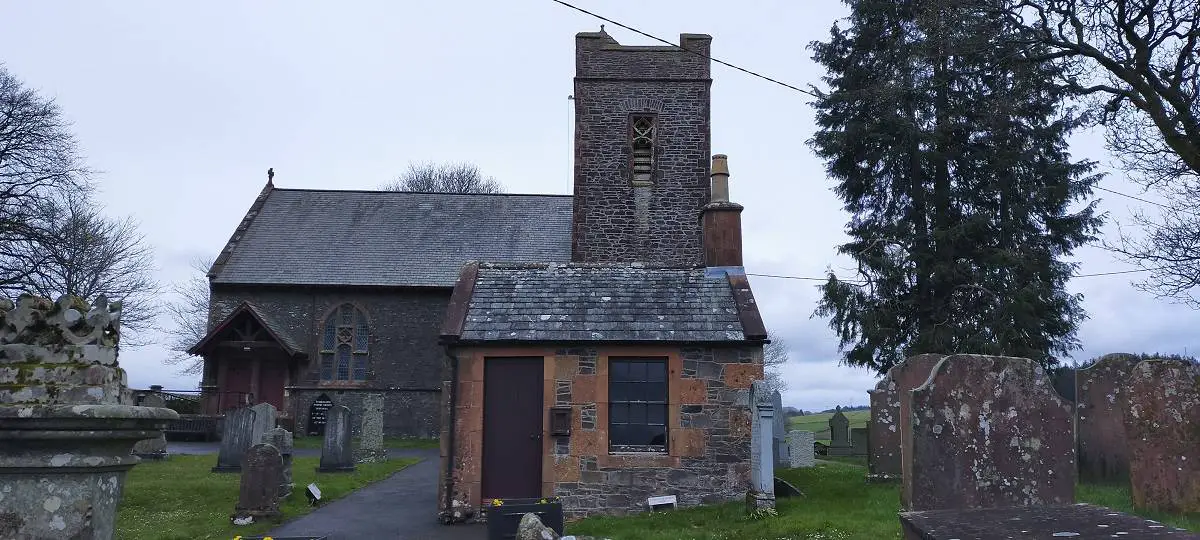
Tucked away in the rural countryside along the B7068, here you’ll find a wee watch house and some terrific memento mori if, like me, you go wandering through the gravestones.
The watch house here is of a simple design, a basic stone structure with a single window and a small chimney, similar to that found at St Bridget’s Kirk in Dalgety Bay, or even Cromdale in the Highlands.
It is now a memorial to those who lost their lives in the Lockerbie Air Disaster in December 1988 and a book of remembrance lies open inside.
The Old Kirk also remains on the site, slowly being choked with vegetation and now a near complete ruin. It’s been fenced off for safety reasons, but the odd stone can be seen through the fencing and thickening ivy.
Elsewhere, the graveyard has a few gems that can easily be seen if you know where to look. From the watch house, head straight ahead of you, bearing slightly left as you transcend down the site.
Here you’ll find small gravestones dotted about depicting some simple, yet beautiful, memento mori – traditional skull and crossbones peeking out from under the long grass.
The wording on the gravestones still very clear to see.
Canonbie: United Parish Churchyard
Lying on the banks of the River Esk and 6 miles (9.6km) from the larger town of Longtown, Canonbie is the graveyard that lies farthest from the haunted A75.
It’s also the last location on the trip to have retained any physical evidence of body snatching activity.
The site here is said to be one of the largest in Scotland – the parish of Canonbie had a church that sat in excess of 1000 people and gravestones on the site date from the 18th century.

Having got hopelessly excited about the mausoleum (above) built in memory of William Mein C.B, Late Lieutenant Colonel & Commander of the 52nd Regiment , thinking in my early naivety that this was the watch house, you can perhaps imagine my disappointment when it suddenly dawned on me that I was looking at the wrong thing entirely.
To ensure you too don’t make the same mistake, I’ll tell you now, the watch house in fact is the shed-like structure at the end of the red gravel path behind you (see the disappointing image below).

As you walk down, take note of all the gravestones leaning up against the boundary wall.
Being on the banks of the river would have meant an easier and quieter removal of cadavers, a similar situation to Peterculter in Aberdeenshire, and I suspect that this was a preferred access point especially with the watch house being at this end of the graveyard.
If you can’t make it to Canonbie or you’d like to see the graveyard from above, the video below gives a great view of the site captured by a drone flight in 2020.
You can easily spot the mausoleum in the center of the site and if you run your eye quickly to the end of the red gravel path to the right of the screen, you can just to say make out the watch house at the end.
Further Locations To Visit
The area along the A75 was heavily hit by body snatchers, especially in the 1820’s and towns and villages such as Annan, Hoddam and Middlebie have some type of body snatching story to tell.
Annan
Annan of course is famous for its links with William Hare, one-half of the notorious murderers Burke and Hare who plagued the streets of Edinburgh in 1828, selling their murder victims to anatomist Dr Knox.
But there are also reports of an attempted snatching in Annan in 1852, all carried out under the cloak of darkness with the assistance of the gravedigger.
A rather late case when you consider that many people state that body snatching ended when the Anatomy Act was passed in 1832.
Hoddam & Midddlebie
Hoddam is rumoured to have had 16 graves emptied, the corpses being sold to the anatomists in one discovery in 1824, while the parish of Middlebie, although targeted in the same year, got off far lighter by the sounds of things.
They haven’t made this selection of places to visit purely because there are no physical remains associated with the sites and the stories, for now, remain anecdotes.
That’s not to say that they won’t be visited in the future when time allows.

